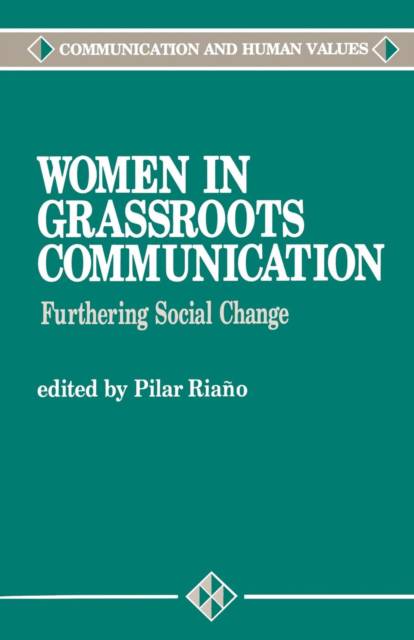
- Retrait gratuit dans votre magasin Club
- 7.000.000 titres dans notre catalogue
- Payer en toute sécurité
- Toujours un magasin près de chez vous
- Retrait gratuit dans votre magasin Club
- 7.000.0000 titres dans notre catalogue
- Payer en toute sécurité
- Toujours un magasin près de chez vous
Women in Grassroots Communication
Effecting Global Social Change
216,95 €
+ 433 points
Description
The volume is celebratory in two senses: first, it brings together the experience of many committed media activists whose work is little known; second, at a time when much of the liberation potential of cultural studies is wrapped up in reception studies, it issues a challenge to complacent theorists to turn the computer off and go out and do some active political work in their field. --Intermedia "Pilar Riaño′s analysis of communication, development, and feminist literature via women as producers of communication is clear, and I think, accurate. I am impressed with the breadth of her knowledge of these fields and her clear thinking and careful organization of the material. . . . I would certainly include a book of this type on the reading list of my course." --Mary Ellen Brown, University of Missouri "A wide-ranging study that addresses key questions in the fields of political science, anthropology, women′s studies, development studies, and popular culture as well as communication. Riaño and her collaborators move us beyond explanations of women′s subordination rooted in notions of passivity and the domestic sphere to an understanding of how women′s communicative strategies can propel social change. By placing the particular experiences of women as communicators and organizers within the context of wider sociopolitical realities in Africa, Asia, Latin America, and North America, Women in Grassroots Communication demonstrates the role of communication strategies and processes in social movements that offer the promise of liberation and democratization." --Elizabeth Mahan, Director, Center for Latin American and Caribbean Studies, University of Connecticut How and to what extent are women in grassroots communication creating avenues for democratic communication and fostering social change? How is grassroots communication consolidating women′s views and perspectives on gender subordination and social transformation? Women in Grassroots Communication brings together a stellar cast of contributors from across the globe--Africa, Asia, Latin America, and North America--to answer these and other questions. First, they review the various frameworks for addressing the relationship between women, participation, and communication, looking at the ways women have been perceived. Next, the authors look at the social roles of women in their communities, their capabilities to communicate, and their informal networks at the local and community levels. The third section focuses on media production and the issues of media competency, identity, representation, evaluation, and group process. Finally, by looking at the connections between women′s participatory practices and wider sociopolitical initiatives, the final chapters examine the issues of organization, leadership, and communication strategies. Women in Grassroots Communication is an important reference or supplemental text for anyone working in or studying the field of development, intercultural communication, women′s and communication studies, and social change.
Spécifications
Parties prenantes
- Editeur:
Contenu
- Nombre de pages :
- 336
- Langue:
- Anglais
- Collection :
- Tome:
- n° 16
Caractéristiques
- EAN:
- 9780803949065
- Date de parution :
- 17-05-94
- Format:
- Livre broché
- Format numérique:
- Trade paperback (VS)
- Dimensions :
- 140 mm x 216 mm
- Poids :
- 426 g

Les avis
Nous publions uniquement les avis qui respectent les conditions requises. Consultez nos conditions pour les avis.





